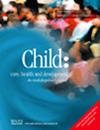Visuomotor Integration Assessment Using Immersive Virtual Reality for Children With Cerebral Palsy: A Pilot Study
Abstract
Background
Visuomotor integration (VMI) impairments are common in children with cerebral palsy (CP) and can impact performance of goal-directed upper-extremity tasks. VMI impairment is clinically assessed using the gold-standard Beery-Buktenica test, whereas research paradigms use computerized assessments incorporating eye and hand movement tracking with touchscreen displays. Immersive virtual reality (VR) may potentially enable more ecologically valid VMI assessments through the inclusion of 3D tasks and visual distractions. However, the potential of immersive VR as a VMI assessment method in children with CP has not been evaluated. The current study aims to investigate how VR can assess VMI impairments in children with CP.
Methods
Twelve children with CP completed the Beery-Buktenica VMI test and performed eye-only, hand-only and eye-hand VMI tasks in touchscreen, visually simple VR and visually complex VR conditions. Eye and hand endpoint accuracy and task completion time quantified VMI performance. We compared performance on each task and in each environment between children with below- versus above-average Beery-VMI scores.
Results
There were no significant relationships between Beery-VMI score and eye-hand task performance in visually simple VR. Compared to the touchscreen task, participants demonstrated significantly reduced eye and hand endpoint accuracy in visually simple VR, with no difference between Beery-VMI groups. Children with below-average Beery-VMI scores decreased eye endpoint accuracy and increased trial completion time in visually complex VR.
Conclusion
Findings from this pilot study do not support immersive VR as a VMI assessment method in children with CP.


 求助内容:
求助内容: 应助结果提醒方式:
应助结果提醒方式:


